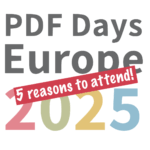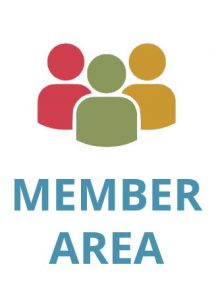ISO 14289-1
Electronic document file format enhancement for accessibility – Part 1: Use of ISO 32000-1 (PDF/UA-1)
PDF files may be created natively, converted from other electronic formats, or digitized from paper. Businesses, governments, libraries, archives, and other institutions and individuals around the world use PDF to represent considerable bodies of important information. These PDF files should be accessible to users with disabilities.
Beyond alternative descriptions for images the accessibility of an electronic document depends on a variety of semantic information describing the logical structure and organization of the page content into sections, paragraphs, lists, tables and so on.
The PDF feature that represents the semantic information necessary for accessibility is known as “Tagged PDF”.
The ISO 14289 (PDF/UA) family of standards consists of:
- ISO 14289-2:2024: This standard is published.
- ISO 14289-1:2014: This “dated revision” includes a variety of corrections. It is available from both ISO and the PDF Association.
- ISO 14289-1:2012: The original PDF/UA specification published in 2012 is no longer available.
Context and limitations
PDF/UA operates as a companion standard to be used in conjunction with ISO 32000-2 (PDF 2.0). A common source of accessibility requirements are the W3C’s Web Content Accessibility Guidelines (WCAG). PDF/UA provides a means of making PDF files that conform to WCAG, and may be used in conjunction with WCAG 2.x. If WCAG 2.2 compliance is used, a PDF Declaration may be included in the XMP Metadata to indicate the relevant WCAG Level.
By itself, conformity to PDF/UA does not necessarily ensure the accessibility of a document’s content. Cases not covered by PDF/UA include, and are not limited to:
- Authors may have used color or contrast in an inaccessible manner
- ECMAScript present in the file may generate inaccessible results
- Text content may not be accessible to those with certain cognitive impairments.
PDF/UA does not cover conversion, or how to achieve conformance; the standard simply states the technical features of accessible PDF documents.
The PDF Association maintains extensive technical resources, including a best practice guide and other educational materials to guide developers and users of PDF/UA.
Additional conformance with PDF/A
PDF/UA-1 documents may also conform to PDF/A-2 (ISO 19005-2) or PDF/A-3 (ISO 19005-3). In such cases, these PDF/A standards require the inclusion of XMP Extension Schema for custom XMP metadata not defined in the relevant ISO 19005 part. The PDF Association provides free XMP Extension Schema templates for PDF/UA-1, other ISO PDF subset standards, and PDF Declarations.
It is not recommended that PDF/UA-1 documents conform with PDF/A-1 (ISO 19005-1), as PDF/A-1 is based on Adobe’s PDF 1.4, whereas PDF/UA-1 is based on ISO 32000-1:2008 (PDF 1.7) and often requires the inclusion of newer features.
This document is available at no cost
exclusively from the PDF Association
As part of the PDF Association’s exclusive PDF/UA bundle, this ISO Standard is made available from the PDF Association at no cost, thanks to generous sponsorship support provided by Allyant, Axes4, CDP Communications, and Targetstream Technologies.
Read the announcement, or learn more about sponsored standards from the PDF Association.

Comments?

Download ISO 14289-1 at no cost.
Buy the same document from ISO.
ISO 14289-1:2014 (PDF/UA-1) defines the use of tagged PDF in files conforming to ISO 32000-1:2008 (PDF 1.7) to ensure accessible content.
Subscribe here for the PDF Association’s periodic updates regarding new, updated, or corrected industry and ISO specifications for PDF technology.
![]()
PDF Association author(s): PDF/UA TWG
ISO Working Group: ISO TC171 SC2 WG9
ISO Status: status of all PDF-related ISO work
Related PDF Association publications:



